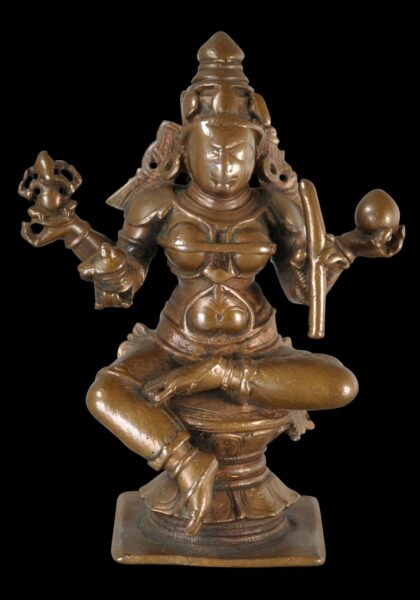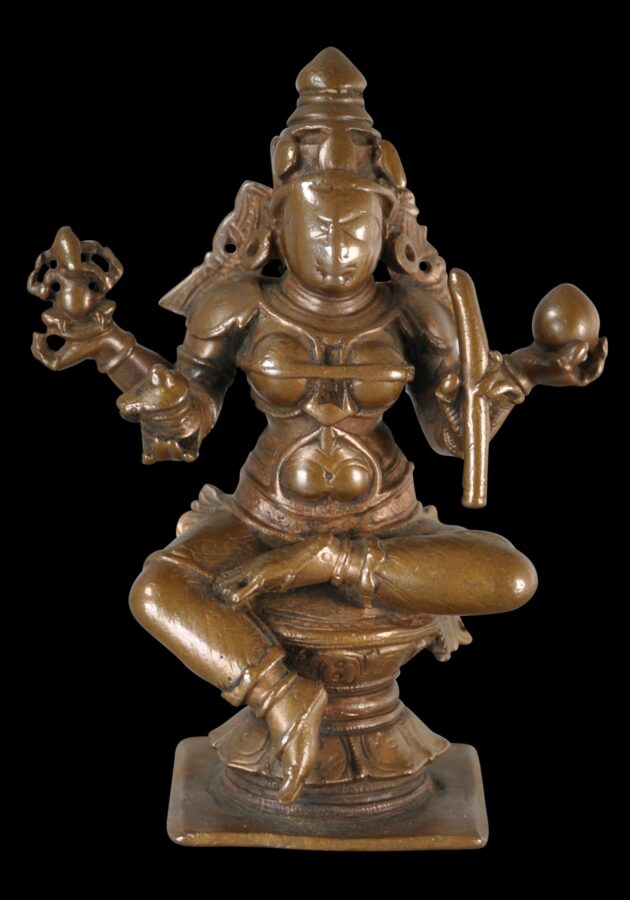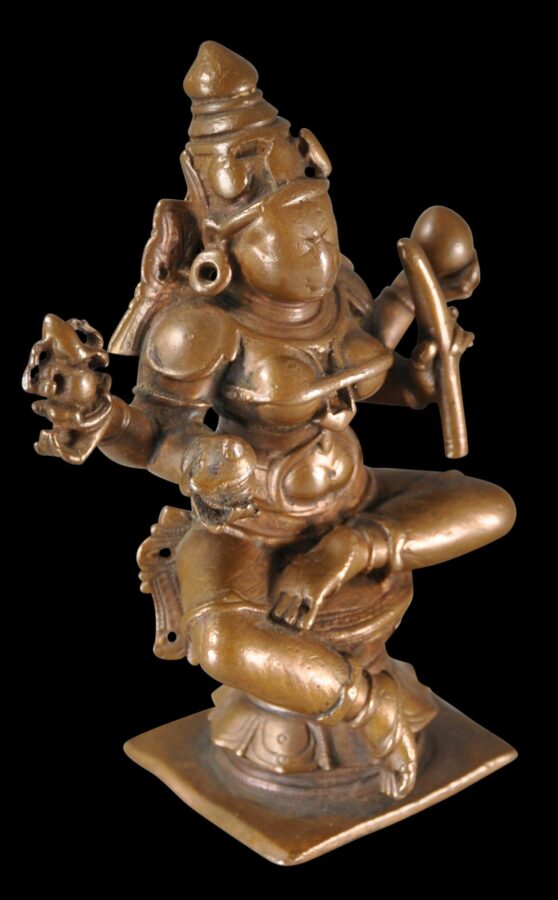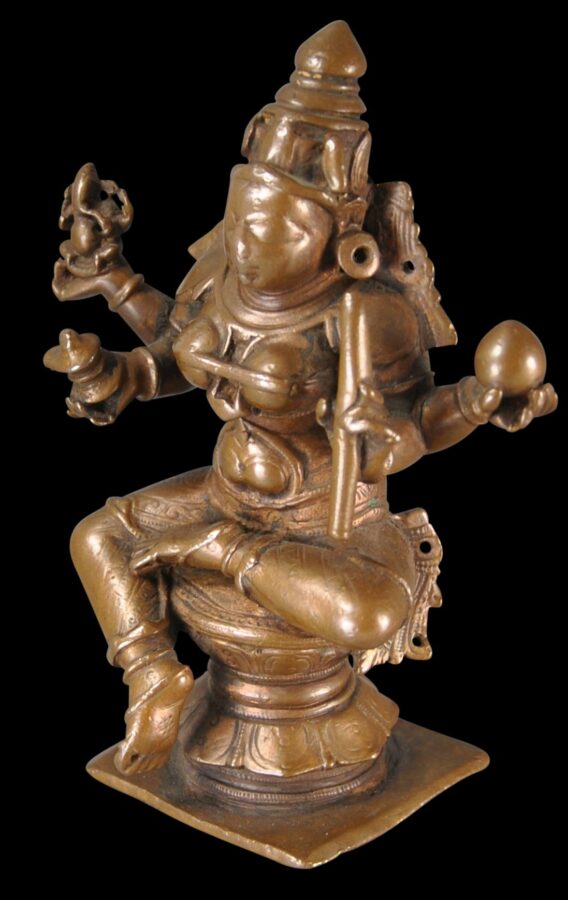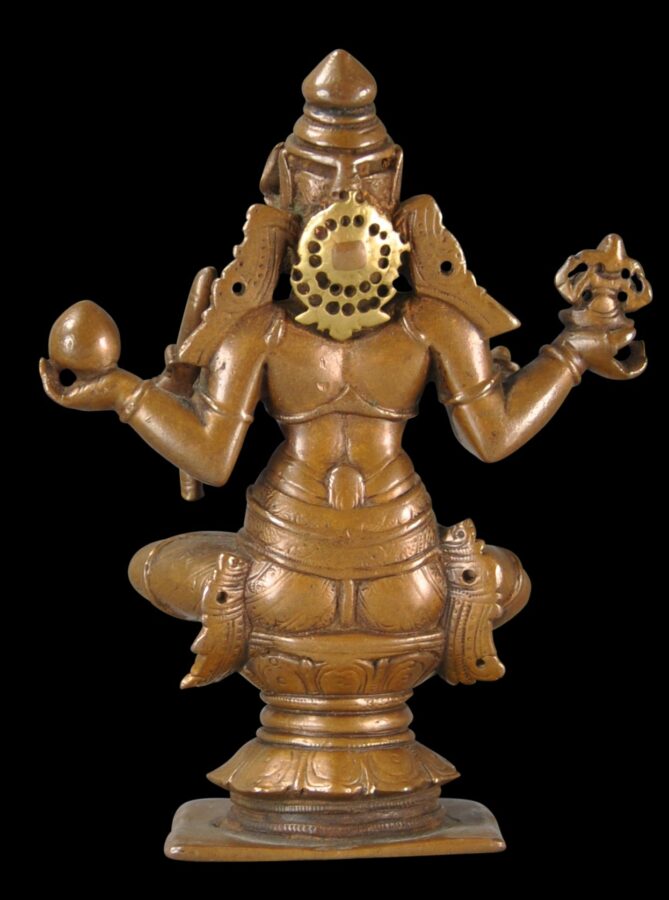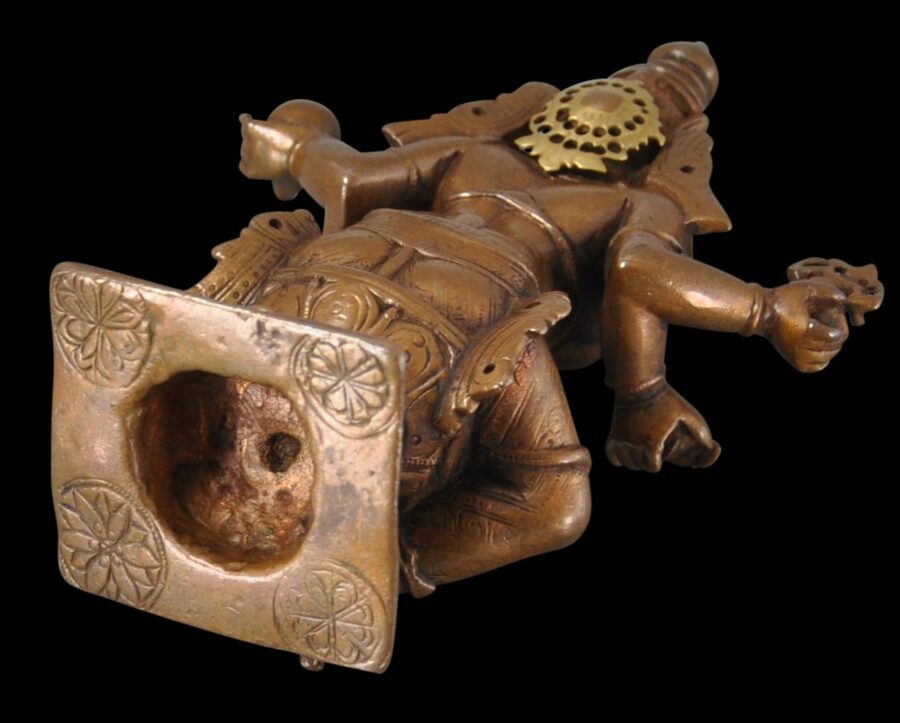This beautiful and unusual image of Parvati, the consort of Shiva, shows the deity seated on a double-lotus waisted platform in royal ease, with the left leg raised and the right leg dropping by the side of the base.
The image is particularly unusual for how it depicts Ganesh, who is usually shown standing on Parvati’s side.
Parvati wears a striped dhoti, ample jewellery, and a tall, pointy chignon (jata-makuta). She has four arms. The upper right arm holds a miniature image of Ganesh, her son with Shiva. The lower right hand holds a lingam-yoni, the symbol of Shiva and Parvati combined. The lower left hand grasps Ganesh’s tusk (by tradition Ganesh is depicted with one full tusk only, the other being broken off) – again this is unusual. The upper left hand holds a beautifully formed citron.
The siras-cakra, the round disk that emanates from the back of the head, is of brass, which provides a sharp contrast with the bronze from which the rest of the image has been cast. A brass siras-cakra is another point of departure for such a bronze.
The combination of brass and bronze in religious items is referred to as ganga-jumna. ‘Ganga’ refers to the River Ganges and ‘Jumna’ to the River Jumna (also called Yamuna). The Jumna is the longest tributary river of the Ganges in northern India. It travels a length of 1,376 kilometres (855 miles) before merging with the Ganges at Triveni Sangam, Allahabad, the site for the massive Kumbha Mela festival every twelve years. It is the longest river in India that does not directly flow into the sea. The water of one has a slight yellow hue on account of the alluvial mud suspended in its waters, whilst that of the other has a reddish hue, and so in this vessel, the two rivers are represented by yellowish brass and reddish copper, with the combination in the one item being symbolic of the merging and mixing of these two holy rivers at Triveni Sangam.
Overall, this is a fine miniature bronze with highly unusual renderings of motifs. It has excellent ritual puja wear and a lovely patina.
References
Nagaswamy, R., Timeless Delight: South Indian Bronzes in the Collection of the Sarabhai Foundation, Sarabhai Foundation, 2006.
Pal, P., Art from the Indian Subcontinent: Asian Art at the Norton Simon Museum, Yale University Press, 2003.


